Additive manufacturing at GKN – Buzzword and reality
It’s been a few weeks since we started our first rotations at our home departments and we’d like to think that we know what we’re doing by now. Well, at least we’ve learned a ton of abbreviations which you’ll soon get a taste of! I was thinking I’d write a bit about what I work with at the Global Technology Center (GTC), namely additive manufacturing or AM for short.
Additive manufacturing is a collection of manufacturing techniques that are based on building a geometry through layer-by-layer deposition of material. The most well-known example are desktop 3D printers that depose molten plastic through a movable nozzle. Nowadays they can be bought for a few hundred bucks at Amazon. At GKN we work with metal AM (MAM), which require machines that cost a few hundred thousand or millions of dollars instead.
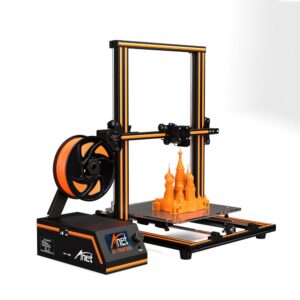
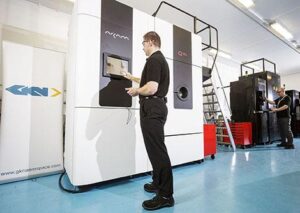
AM generates a lot of hype in general and specifically so in the aerospace industry. In comparison to for example the automotive industry we produce low volumes of products, which means the low deposition rate of AM processes is not as much of a problem. AM gives larger freedom in design than conventional manufacturing methods, for example by allowing internal voids in areas where material is not needed. This means that we can create a mathematically optimized design to minimize the weight of a component in relation to its performance. Lower weight means less fuel consumption and environmental impact – High five, Thunberg! Another advantage is in products that would otherwise require joining of multiple components. One example here is the rotor of our concept rocket engine Prometheus, which by use of AM has reduced the number of components from over 100 to just two (!!!).
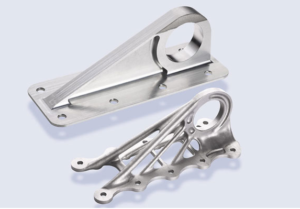
At my department we primarily work with LMD-W, which stands for Laser Metal Wire Deposition. In LMD-W molten metal is deposited on the substrate (the “base”) by laser heating of a metal wire, held by a robotic arm. The primary focus is to build features such as flanges on large structures, for example a product called Fan Case Mount Ring. Currently, the material is bought as a titanium forging weighing roughly 550 kg and is then machined to a final weight of about 80 kg. Instead, we may start with a forging of 80 kg, add 25 kg of flanges and other features by LMD-W and then machine to a final weight of 75 kg or so. We have then reduced the amount of material wasted by 94 %, which once again is an enormous environmental improvement!
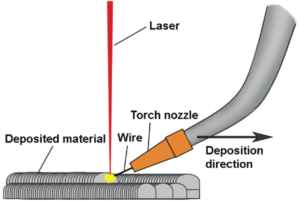
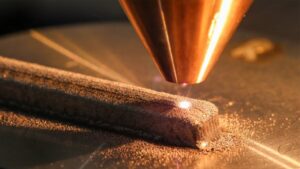
Given what AM is capable of it’s hard not to hype the technology – what could possibly be sexier than lasers, robots and reduced environmental impact?